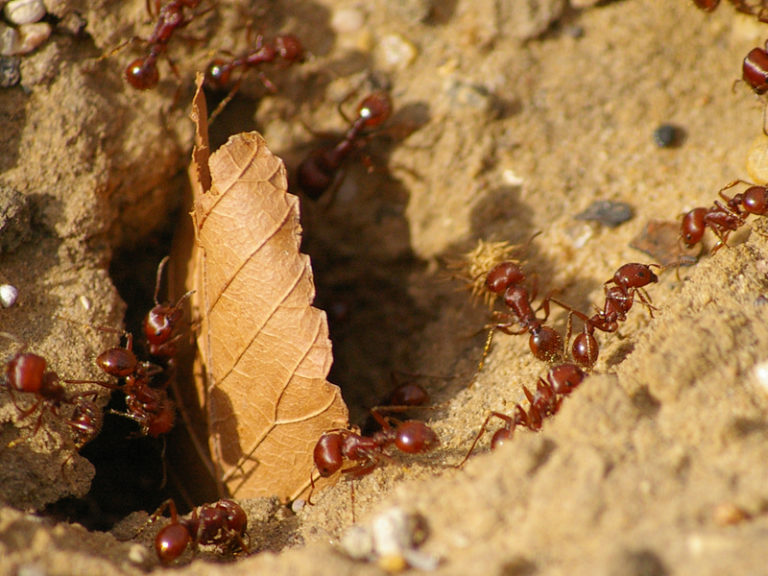


Baits labeled for application to lawns to control harvester ants are very effective. Any insecticide registered to control ants can be used to control them. Destruction of their nests and habitat through regular discing and mowing may eliminate them without resorting to use of insecticides.

Generally harvester ants are easy to control. The red harvester ant in lawns and city parks make these places unsuitable for recreation as people are often attacked and stung while playing. This ant causes considerable damage to grass and cropland when it constructs nests for its huge colonies. Nests may be excavated to great depths, one nest reportedly extended 15 feet deep and contained 436 chambers. They prefer small seeds and gather Alfalfa, burr clover, Johnson grass, oats, wheat, Bermuda grass, wild sunflower, mesquite, beans, and others. Nests are constructed consisting of many tunnels and chambers where the workers store seeds, which are the main food source, along with scavenged arthropod flesh. Foraging trails may extend outward for 200 feet, becoming less distinct farther away from the nest. There may be one or more distinct foraging trails that lead from the nest entry hole to surrounding vegetation. The ants remove the vegetation around the nest allowing the sun to keep the area warm and dry. The nesting area averages about 12 feet in diameter but may range from 3 feet to 35 feet. They nest in barren circular areas of varying size with a single entry hole. They may be more commonly found in cultivated land than non-cultivated because of the available food. In the United States, Pogonomyrmex barbatus occurs in areas of comparatively low elevations, nesting in soil on open land. In the southern part of its range it is commonly found at elevations of more than 3,000 feet. It occurs sporadically in extreme southern Utah. Smith), ranges from Kansas and Oklahoma through western Texas into Mexico and southward through New Mexico and Arizona. The red harvester ant, Pogonomyrmex barbatus (F. The males may return to swarming and attempt to mate with other females. The newly mated queen finds a suitable nesting site to start a new colony.

Females emerge from the nest and fly into the swarm and select one or two males and mating follows. Males take flight first and swarm above a landmark. They occur most commonly following rain during August and September. New colonies are formed by mating flights. All sutures on the thorax are weakly defined (suturiform). The epinotum is armed with a pair of spines. They have 12-segmented antennae without a club, a row of hairs (psammaphore) on the underside of the head which enables them to carry large loads. Pogonomyrmex barbatus is generally red in color with some light/dark variations. The workers of this species are monomorphic (one size) although variations in size occur. Have 12 segmented antennae without a club.Have a row of hairs on the underside of the head (psammaphore).


 0 kommentar(er)
0 kommentar(er)
